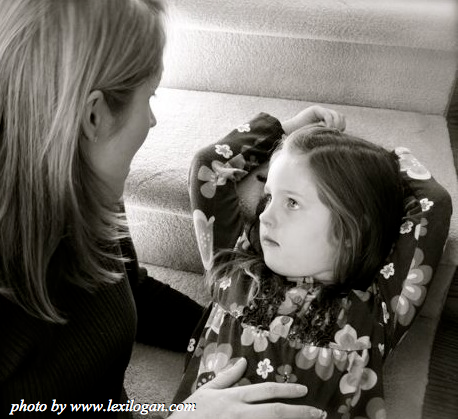How to explain scary news to children
 In light of the recent school shooting in Parkland, Florida, you may be left wondering if, and how, to explain this or other tragedies to your children.
In light of the recent school shooting in Parkland, Florida, you may be left wondering if, and how, to explain this or other tragedies to your children.
Understand that kids sense your emotions even if you don’t tell them. Not telling them about an event may make them concerned that they are the cause for your worried hushed conversations. Break away from your discussion with adults to say, “ Do you know what we are talking about? We are not talking about you.”
Even though an event may be far away, media makes it seem as if it happened next door, and sooner or later your children will see or hear about it. Tell the facts in a straight forward, age appropriate manner. Answer questions and don’t be afraid to answer with an “I don’t know.” Preschoolers are concrete in their thinking—dragons are real and live under their bed, so don’t put any there that do not exist. For a preschooler a simple “Mom is sad because a lot of people got hurt,” will suffice. Young school age kids will want to know more details. And be prepared to grapple with more high level questions from teens.
Look for the helpers. Mr. Rogers who hosted Mister Roger’s Neighborhood for 30 years, tells this story about seeing scary things on the news: “My mother would say to me, ‘Look for the helpers. You will always find people who are helping.’ To this day, especially in times of ‘disaster,’ I remember my mother’s words, and I am always comforted by realizing that there are still so many helpers-so many caring people in this world.”
What if the kids ask, “Will that happen here?” or “Why did that happen?” Again, reassure in a simple straight forward manner. For instance you can say, “Many people are working hard to prevent something like that here.” Consider answering the question with a question. Asking “What do you think?” will give you an idea of exactly what your child fears. You can also reach out to other family supports for help with answers. Say to your child, ”I wonder what our minister or school counselor has to say about this, let’s ask.”
Routine is reassuring to children, so turn off the background 24 hour television and internet coverage and make dinner, take them to sports activities, and get the homework done.
Give your kids something tangible to do to be helpful. Help them set up a coin donation jar at school or put aside part of their allowance for a donation.
If your child seems overly anxious and fearful, and her worries are interfering with her ability to conduct her daily activities, such as performing at school, sleeping, eating, and maintaining strong relationships with family and friends, then seek professional help.
For more advice on this topic, please see this American Academy of Pediatrics recommendation for parents. Also, the following is a firearms safety message for parents, from the AAP:
• Young children are curious. They are often unable to remember or follow safety rules. Teens are impulsive, and naturally tend to be moody. When combined with access to firearms, the consequences can be tragic and permanent.
• Many homes have guns – which is why you have to ask about guns when your child visits another home. Depending on location, 18 percent to 64 percent of U.S. homes have firearms.
• If there is a gun in the home, there’s a good chance a child living there will know where it is. In a recent study, 39 percent of parents erroneously believed their children did not know where their gun is stored, and 22 percent wrongly believed their child never handled a gun.
• The safest home for children and teens is one without guns. If you do have a gun, you can greatly reduce the risk of a child being injured or killed by storing the gun unloaded and locked, with the ammunition locked in a separate place.
Parent your children so they feel secure in themselves and secure in the world around them. You may not hold the answers to why a tragedy strikes, but you do hold the ability to comfort and reassure your children.
Naline Lai, MD and Julie Kardos, MD
© 2018 Two Peds in a Pod®, adapted from our 2015 post